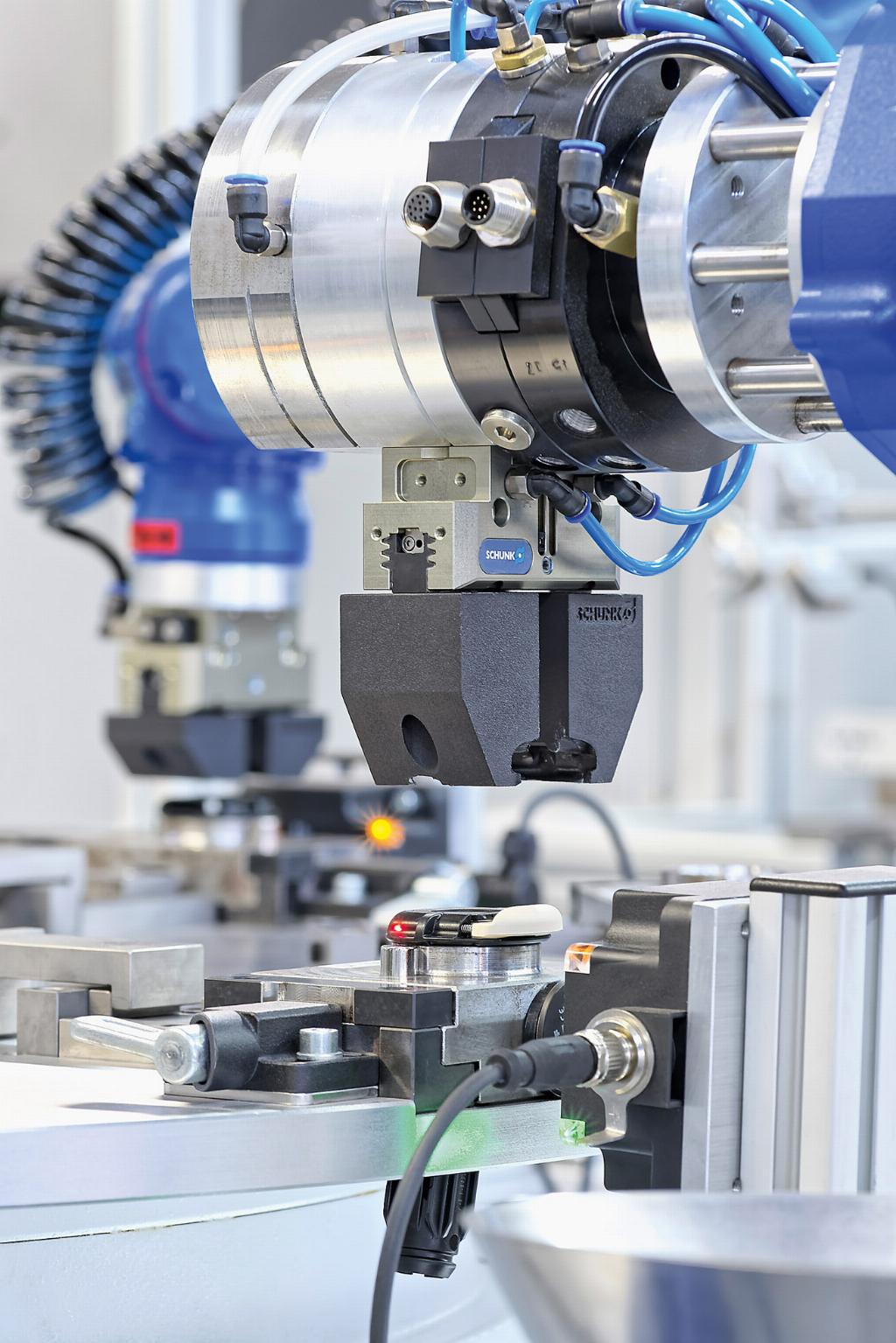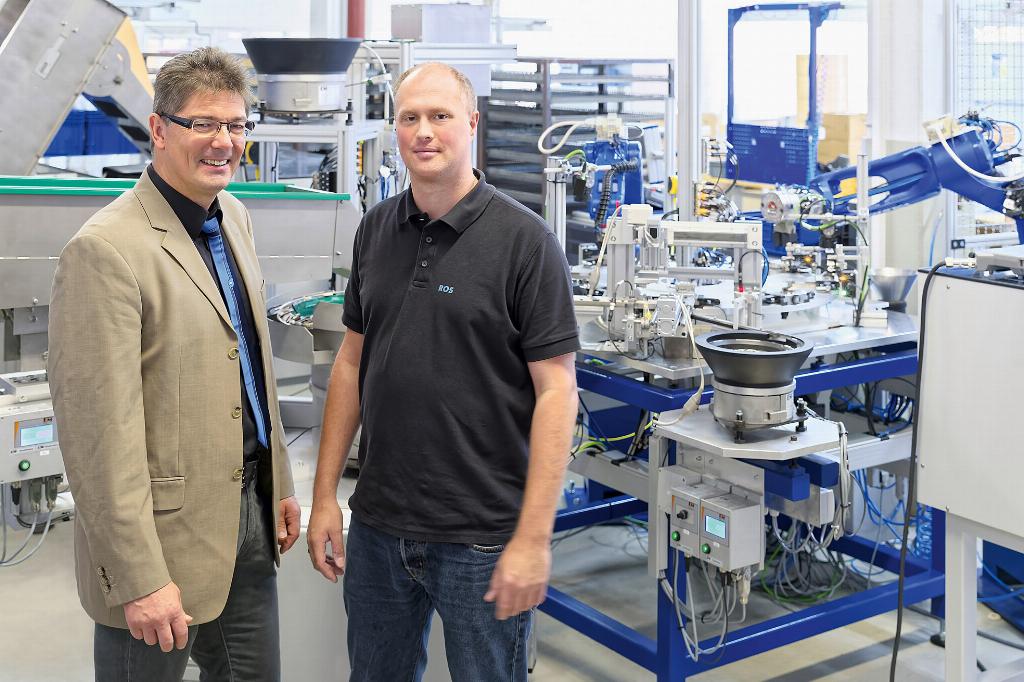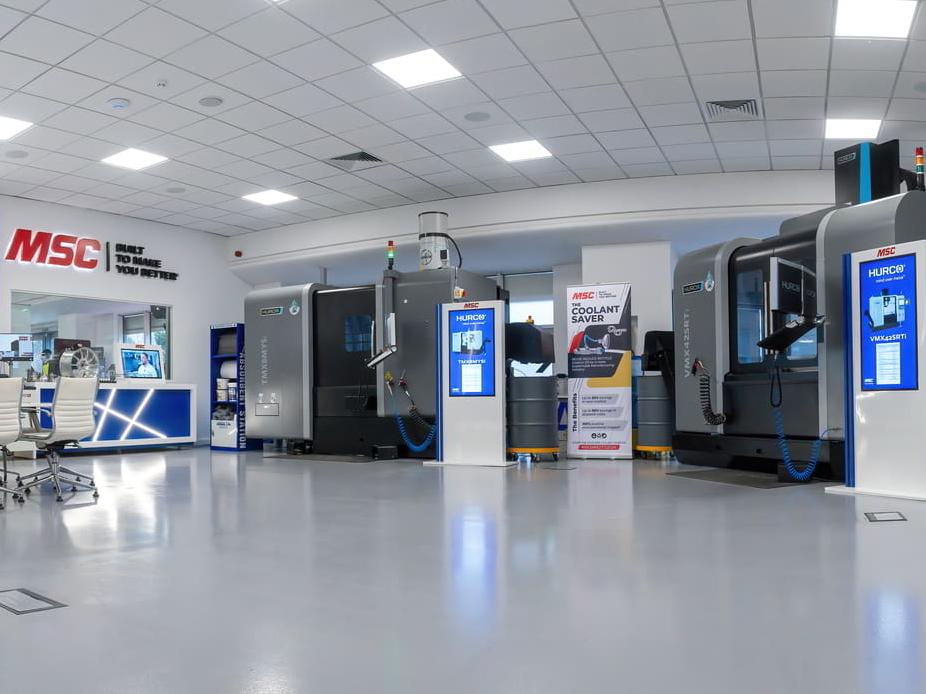Additive gripper solution

With its additively manufactured gripper fingers, Schunk says it has opened a new chapter for online sales in the field of mechanical and plant engineering. PES reports how the service has transformed production at German car seating specialist ROS GmbH.
Automotive supplier ROS GmbH & Co from Coburg uses the convenient 3D online design tool Schunk eGrip for its diverse robot handling and assembly systems. Just a few clicks are sufficient to upload the STEP or STL data, design the finger and trigger the order for the additively manufactured components.
Christopher Lamprecht, production planner at ROS says: "With just a little bit of background knowledge of CAD, the program is very easy to use. It is ultimately a great modular design tool. You upload the step model, align it in the X, Y and Z-directions, rotate the part in the orientation you want to grip it and then the fingers are automatically adjusted. It really is child's play."
Comparable with an online photo service, the operator configures the required gripper fingers by means of a few specifications, chooses the material and gripper type, installation position and finger length. Once the basic information has been entered, the tool shows the delivery date and the exact price.
If the material is changed by the customer, the price changes automatically, making it very easy to compare the available materials with each other. Using a volume-based price model, Schunk can pass the cost benefits of cumulative production directly onto its customers: the smaller the volume, the more affordable the fingers.

Seating supplies
With around 300 employees, ROS develops and manufactures highly precise tools and equipment in its Coburg and Ummerstadt plants for the production of parts made from Duroplast and Thermoplast plastics.
In the specialism of seat manufacturing the company provides a comprehensive portfolio of components for headrests and seat adjustment. Worldwide, virtually all cars in the high-end market use guide bushings made by ROS that are fitted to lock the headrests.
Detailed design
The company is open to innovative technologies like the Schunk eGrip. In two assembly plants for a Bavarian car maker, the company has used the 3D design tool for the first time. Within two weeks, the additively manufactured gripper fingers were on Christopher Lamprecht's desk – additively manufactured, with the design precisely specified by him.
Almost 20 different module variants are produced on two fully automatic machines at the plant. Each achieves an output of several hundred parts per hour, so it is beneficial if the gripper fingers are designed universally so that no conversion is required.
"By being able to additively manufacture the fingers, we can have the same gripper which can be used for all variants. I don't have to change any mountings and have no maintenance or retrofitting work. This is a huge advantage," Mr Lamprecht explains.
With minimum effort, he can adjust the gripper fingers to the optimum design. He says: "All in all, the online tool has saved a great deal of work in our equipment construction. Normally from developing the design for the grippers, to the first tests, milling operations and coordination, two days would be needed but with eGrip, the effort is half an hour max. When the fingers were delivered, they worked straight away."

Time saving options
The time reduction using Schunk’s online shop for individually designed gripper fingers is impressive. It claims the design time for gripper fingers can be reduced by up to 97%. The production and delivery time can be reduced by as much as 88%. In addition, the finger price is reduced by as much as 50%.
Eight to 10 different sleeve variants can be produced for each machine. For this, the guide bushings are separated on one linear unit and then delivered. A camera records the rotational position and transfers the data to the robot, which grips and places the sleeve precisely aligned on the rotary table using a multi-tooth guided Schunk universal gripper PGN-plus 64.
At each station, springs, buttons and caps are then assembled. A second robot, which is also fitted with a Schunk PGN-plus gripper, serves to discharge NIO (out of order) parts. For this, secure access must be ensured, regardless of what order the components have been fitted. Therefore the gripper jaws of the two Yaskawa robots differ accordingly.
So that the material of the gripper fingers can be precisely adjusted for a specific application, Schunk offers three materials for the eGrip: stainless steel fingers with a material density of 8g/cm³ and a tensile strength of 700N/mm², an elasticity modulus of 190kN/mm², an elongation of 34%, and a tolerance of ±0.1mm (coating thickness 30µm) or ±0.2mm (coating thickness 50µm). These are primarily suitable for sophisticated applications in machine manufacturing.
Fingers made of aluminium (AlSi10Mg) or polyamide 12 however show their benefits primarily in dynamic assembly applications. The latter, with a density of just 0.9g/cm³, are extremely lightweight, resistant to chemicals, suitable for use with food products and can also be used reliably in connection with cooling lubricants and aggressive media.
Schunk also offers top jaws made of FDA-approved polyamide 12 (PA 2201) specially for use in the pharmaceutical and medical sector. For Christopher Lamprecht, the polyamide fingers also offer additional benefits.
He says: "Until now we usually used conventionally manufactured aluminium fingers; we chose polyamide for the additively produced fingers. This will ensure that the sleeves are handled carefully."
In terms of durability, Mr Lamprecht is confident about the performance of the additively made fingers: "Up until now, the plastic fingers only exhibit minimal wear, which is very good news,” he says. “When we have to tightly grip difficult parts in the future, we will certainly use eGrip again."

Easy ordering
Schunk has created an order process with many options. If customers don't want to order the gripper fingers immediately, they can recall the automatically saved data using the configuration number, continue processing it or request it via email so it can be submitted to the purchasing department later.
The external contour of the generated modules, consisting of gripper, top jaws, and workpiece, can also be downloaded free of charge as an STL file and used directly for the construction of the system. Follow-up orders are just as easy, because all orders can be recalled again, activated again or adjusted at any time.
The intelligent web tool, available in German and English, is available for the Schunk PGN-plus universal gripper 40 to 125 (polyamide) or PGN-plus 40 to 80 (aluminium and stainless steel), for the pneumatically controlled Schunk MPG-plus 20 to 64 small-components grippers, and for the electrically controlled 24V Schunk EGP 20 to 50 small-components grippers. Orders can also be placed from EU countries and Switzerland.
Schunk www.gb.schunk.com















